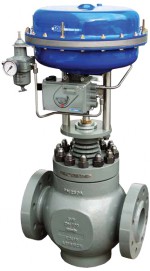A concise guide to AMP6
Published: 10 May, 2018
Since the start of 2016, commercial and residential buildings have consumed over 6.4 million litres of water worldwide. Nick Cowley, integration director and country manager of composite technology specialist MCL Group Industries, explores the benefits that Total Expenditure (Totex) approaches can create for water companies and their customers.
Since the launch of the sixth Asset Management Plan (AMP6), water authorities are adapting their philosophies to decrease wastewater effluents and increase water efficiencies.
A key part of this change is the adoption of Totex as a way of evaluating and planning expenditure, in place of Capital Expenditure (Capex) or Operating Expenditure (Opex). Totex accounts for both operating and capital expenditure, creating a more realistic view of the value of a utilities asset. To make Totex work, it's essential that the asset manager understands the cost and lifecycle of all of the assets contained in the plan and investigates alternatives to reduce expenditure and improve efficiency.
The year 1989 held the fall of the Berlin wall, the public launch of GPS and the debut of the Gameboy. Aside from these iconic moments, 1989 was also the year in which the UK Government created the first Asset Management Plan for regional water systems across the UK. The objective was to ensure the successful maintenance of all water infrastructures by the UK’s water authorities through the privatisation of the industry.
Over the past 28 years, the UK’s water systems have significantly improved from the lead, and sometimes even wooden, pipes installed during the industrial revolution of the 1800s. Britain’s ongoing urbanisation has supported the evolution of its aging water infrastructures thanks to extensive private investment from independent water authorities. Over this time, these companies have standardised on a Capex approach that facilitated the quick replacement of outdated water systems at low costs to make the most of on industry demand.
However, while a Capex approach can provide an instant fix at low costs, it can quickly become a lesson in futility. For the last 28 years, water authorities have accumulated staggering Opex and Totex costs, due to low quality solutions that require constant and costly maintenance that quickly outweighs their low purchase costs.
AMP6 is helping companies to revaluate the efficiencies of their water systems in an effort to decrease the escalating costs that they and their consumers are consequently facing because of increased Opex and Totex charges.
Water authorities are successfully evolving their approach from Capex to Totex by implementing new products built using the latest technologies and designs. Authorities can be confident that they will extend product life and improve water efficiencies, by implementing systems and products are manufactured to withstand degrading over time, such as rust and corrosion, authorities can immediately reduce their Opex costs. For example, chlorination kiosks made of composite materials are a popular innovation, increasingly used by water authorities that are embracing Totex approaches.
While increased product life is an important consideration for water authorities adopting Totex approaches, products that reduce wastage are also a successful way of eliminating escalating Opex costs. Although a small leak in one pipe may not be worrying, extrapolate this onto a national scale and the efficiency and expenditure of the UK’s water system instantly becomes a national problem. Ensuring all systems are free from leaks or faults keeps maintenance and replacement costs to a minimum.
Just as Gameboy’s and GPS technology have been replaced with more advanced versions over the last 28 years, so too has the UK’s water distribution and management systems. By working closely with suppliers that are investing heavily in the latest technologies and techniques, utilities companies can ensure the continued efficiency of the UK’s water systems. By changing their approaches from Capex to Totex, a utility company can reduce expenditure and costs for both themselves and their customers.





 VALVEFORCE, a leading UK independent steam and control processes expert provides turnkey solutions including specifying and design, supply and installation, service and maintenance. As a control valves specialist Valveforce says it provides outstanding technical knowledge and support to a wide range of business sectors including but not limited to the heating, cooling and ventilation industries. Valveforce also holds an extensive stock of valves for immediate dispatch and sensible delivery times for very large valves.
VALVEFORCE, a leading UK independent steam and control processes expert provides turnkey solutions including specifying and design, supply and installation, service and maintenance. As a control valves specialist Valveforce says it provides outstanding technical knowledge and support to a wide range of business sectors including but not limited to the heating, cooling and ventilation industries. Valveforce also holds an extensive stock of valves for immediate dispatch and sensible delivery times for very large valves.
